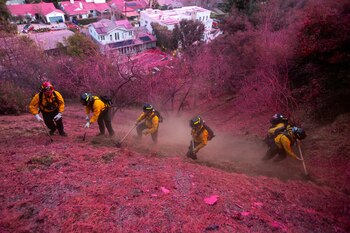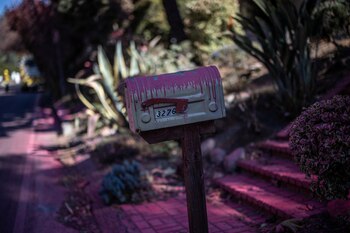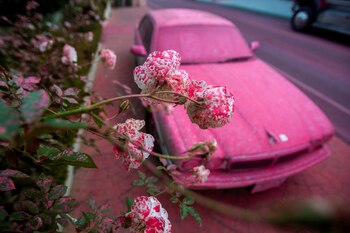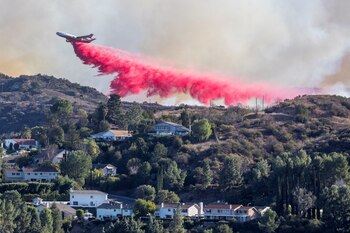The use of red retardant in the Los Angeles fires: what it is, how it works and its environmental impact


In the middle of the devastating fires that affect Los Angelesauthorities have deployed a resource widely used in fighting fire: a bright red chemical retardant known as Phos-Chek. This material, which has been dumped from airplanes cistern over residential areas, vehicles and streets, has generated shocking images and raised questions about its composition, operation and possible effects on the environment.
As reported USA Todaythis retardant has been a key tool in fighting forest fires for more than half a century, although its use is not without controversy.

The retardant, approved by the U.S. Forest Service, is composed primarily of salts, like agricultural fertilizers, that alter the way fire consumes vegetation. These salts are mixed with water and presented in wet or dry concentrates, depending on the needs of emergency teams.
Between 2009 and 2021, it is estimated that more than 440 million gallons of this retardant have been used on federal, state and private lands, mainly in the western United States, according to federal data cited by the media.

The distinctive red color of Phos-Chek It comes from iron oxide, a chemical compound commonly known as oxide or “rust.” This pigment has no functional purpose in suppressing firebut rather facilitates the visibility of the material from the air and on the ground, allowing emergency teams to identify the treated areas. According to the United States Forest Servicethe color fades over time due to exposure to environmental factors such as rain and wind, and can disappear completely in a matter of months.
The retarder’s operation is based on a series of chemical reactions that occur when the fire comes into contact with him. According to the manufacturer Perimeter Solutionshe heat of the fire activates the components of the retardantwhich prevent plant cellulose from feeding the flames. Instead of burning, the treated plant material emits water vapor, which cools the fire and reduces its intensity. In addition, the process leaves a layer of black carbon that insulates and limits the flow of air to the residual fuels, making it difficult for the fire to spread and facilitating its control.

Although he Phos-Chek It has been approved by the United States Department of Agriculture after passing environmental safety tests, its application is subject to strict regulations. According to the Daily Mailhe Forest Service requires maintaining a distance of at least 91 meters from water courses to avoid damage to aquatic fauna, especially fish. However, exceptions are allowed in situations where human life or critical infrastructure is in danger, as long as subsequent environmental impacts are assessed and mitigated.
A study carried out by researchers from the University of California, Los Angeles (UCLA)published last year, raised concerns about the presence of toxic metals in retardants prolonged use, including Phos-Chek. However, the manufacturer has repeatedly rejected the findings of this study, defending the safety and effectiveness of its product. Furthermore, the state of California It has not identified substances linked to cancer or reproductive and developmental damage in the retardant, according to the media.





